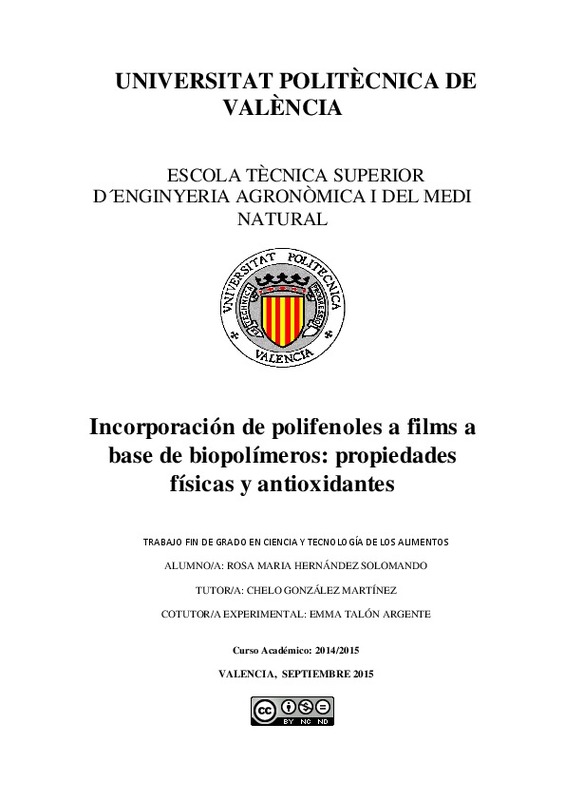JavaScript is disabled for your browser. Some features of this site may not work without it.
Buscar en RiuNet
Listar
Mi cuenta
Estadísticas
Ayuda RiuNet
Admin. UPV
Incorporación de polifenoles a films a base de biopolimeros: propiedades físicas y antioxidantes
Mostrar el registro completo del ítem
Hernández Solomando, RM. (2015). Incorporación de polifenoles a films a base de biopolimeros: propiedades físicas y antioxidantes. http://hdl.handle.net/10251/55617.
Por favor, use este identificador para citar o enlazar este ítem: http://hdl.handle.net/10251/55617
Ficheros en el ítem
Metadatos del ítem
| Título: | Incorporación de polifenoles a films a base de biopolimeros: propiedades físicas y antioxidantes | |||
| Autor: | Hernández Solomando, Rosa María | |||
| Director(es): | ||||
| Entidad UPV: |
|
|||
| Fecha acto/lectura: |
|
|||
| Resumen: |
[ES] Actualmente hay un creciente interés por el desarrollo de envases y/o películas activas, por ejemplo con capacidad antimicrobiana o antioxidante. Estos materiales, aplicados a alimentos, podrían contribuir a alargar ...[+]
[EN] Edible films of different formulations based on pea starch (St), chitosan (CH) and
hydroxypropylmethylcellulose (HPMC) with glycerol as plasticizer and tannic acid as a cross-linking agent in some chitosan formulations, ...[+]
|
|||
| Palabras clave: |
|
|||
| Derechos de uso: | Reconocimiento - No comercial - Sin obra derivada (by-nc-nd) | |||
| Editorial: |
|
|||
| Titulación: |
|
|||
| Tipo: |
|
recommendations
Este ítem aparece en la(s) siguiente(s) colección(ones)
-
ETSIAMN - Trabajos académicos [3541]
Escuela Técnica Superior de Ingeniería Agronómica y del Medio Natural







